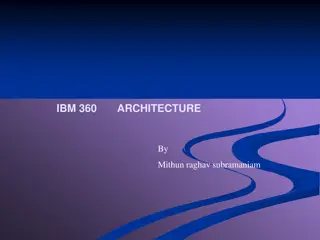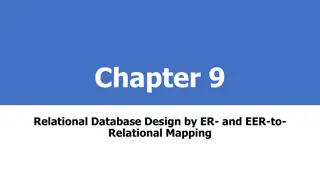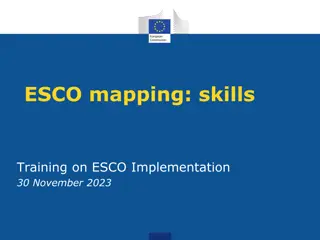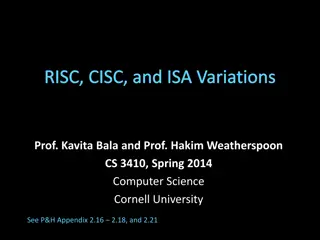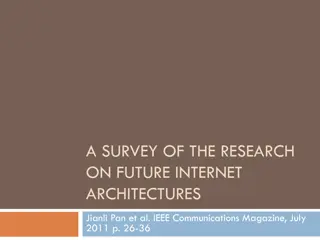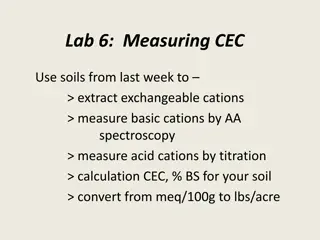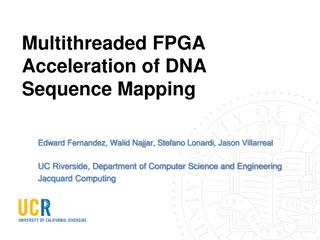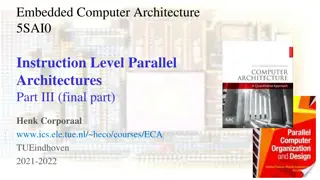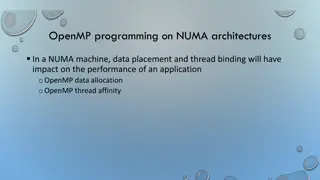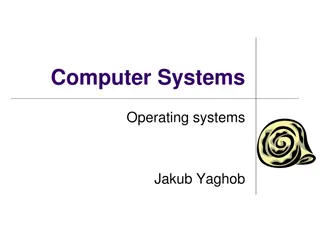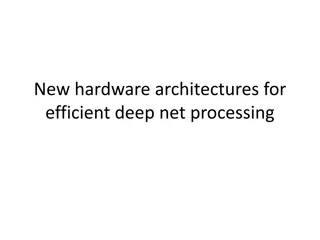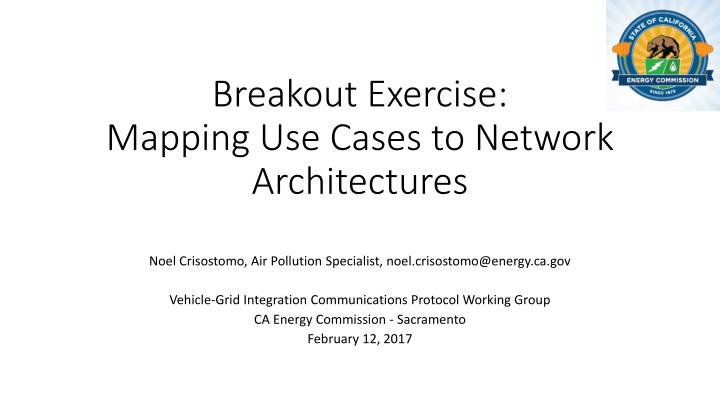
Mapping Use Cases to Network Architectures for Vehicle-Grid Integration Communication Protocol
Explore how technical needs and value categories are assigned in the context of Vehicle-Grid Integration (VGI), with examples of use cases like CAISO Negative Pricing and Demand Charge Management. Visual diagrams aid in understanding the concepts behind network architecture and public charging arrays.
Uploaded on | 1 Views
Download Presentation

Please find below an Image/Link to download the presentation.
The content on the website is provided AS IS for your information and personal use only. It may not be sold, licensed, or shared on other websites without obtaining consent from the author. If you encounter any issues during the download, it is possible that the publisher has removed the file from their server.
You are allowed to download the files provided on this website for personal or commercial use, subject to the condition that they are used lawfully. All files are the property of their respective owners.
The content on the website is provided AS IS for your information and personal use only. It may not be sold, licensed, or shared on other websites without obtaining consent from the author.
E N D
Presentation Transcript
Breakout Exercise: Mapping Use Cases to Network Architectures Noel Crisostomo, Air Pollution Specialist, noel.crisostomo@energy.ca.gov Vehicle-Grid Integration Communications Protocol Working Group CA Energy Commission - Sacramento February 12, 2017
Part a) Identify technical needs to complete Use Cases successfully, to assist formation of Network Architecture Use Case Actions requested and actuated by the VGI resource to complete a(n) objective(s), subject to various constraints or situations Categorized by 3 Binary Attributes in VGI Whitepaper & Roadmap: Resource Quantity One or Aggregated Actors Objectives Unified or Fragmented Power Flow Direction V1G or V2G Network Architecture Comprised of multiple Actors providing Messages to each other to complete the objective Senders Recipients Intermediaries Both Senders & Recipients of messages
Part b) Assign value categories from grid services to use cases. Grid Service PEV ( ) Charges PEV ( + ) Discharges PEV ( 0 ) Stops Value Categories [See E3 Storage Benefits Matrix] Storage Service Recipient Category Planning/Procurement Reliability Capacity Time Shift Gen Ops T&D Ops
We will answer: What Actors must be involved to complete Use Cases? Are there permutations? Use Case Network Architecture
Use Case Examples CAISO Negative Pricing (Charge) + Congested Distribution Feeders (Discharge) Across Many Facilities & Vehicle Types Demand Charge Management of a Public Charging Array per a Commercial TOU Rate Fleet Regulation Down per CAISO Automatic Generation Control Manage Own Vehicle s Charging per TOU
Demand Charge Management of a Public Charging Array per a Commercial TOU Rate To facilitate understanding, sketch out diagrams to explain assertions. kW original kW shift Coincident Peak High Price t initial t final
Examine from the perspective of the Subgroup Focus Areas (c) (b) (d) (a) (d)
Subgroup Focus Area Questions EVSE EV a. Which VGI use cases require communications between the Electric Vehicle (EV) and EV Service Equipment (EVSE)? i. Which existing communication protocols apply to these use cases? ii. For which VGI use cases are communications between the EV and EVSE optional? (See also b, c, d within Workplan)
Answer Subgroup Focus Area Questions to Develop Requirements (a) Yes, DCM requires EVSE/EV signals (i) The following communications protocols apply ISO 15118, J2847, Because (list requirements): EVSE_1 must send BEV_1 P_1(kW) for t_1(min) before t_depart Sum of P_1 to P_10 + Building Load during t_initial to t_final is kW_shift
Demand Charge Management of a Public Charging Array per a Commercial TOU Rate Amend diagrams to reflect requirements communicated/actuated Load Profile: Commercial Building + 10 BEV Charging Array kW original kW shift P_10 . . . . P_1 P_1*t_1 Coincident Peak High Price t initial t final t depart
Demand Charge Management of a Public Charging Array per a Commercial TOU Rate Assign Value Categories from Grid Services to Use Cases (E3) Qualitative Distribution Investment Deferral System or Local Generation Capacity Flexible Capacity Reduced infrastructure rqeuirements Reduced Procurement of A/S (non-exhaustive) Load Profile: Commercial Building + 10 BEV Charging Array kW original kW shift Demand Charge Reduction TOU Energy Charge Reduction Coincident Peak High Price t initial t final
Answer Subgroup Focus Area Questions to Develop Requirements (a) No, in DCM EVSE/EV is optional. (ii) Communications between the EVSE/EV are optional for DCM Because: See Focus Area (b),(c),(d)
In the No cases where communications within a Subgroup Focus Area may be optional, examine the analogous questions elsewhere. (c) (b) (d) (a) (d)
Demand Charge Management of a Public Charging Array per a Commercial TOU Rate Closely examine Y or N answers for violations of requirements Load Profile: Commercial Building + 10 BEV Charging Array kW original kW shift Coincident Peak High Price t initial t final t depart Sum of P_1 to P_10 + Building Load + Fragmented BEV Charging during t_initial to t_final IS NOT kW_shift
Agency Staff will: Observe breakouts and facilitate stuck conversations Encourage diverse participation Help ensure breakout activity is successful in: Answering Deliverable 1 Questions Which use cases require communications between the [Subgroup Focus Area]? Which existing communication protocols apply to these use cases? For which VGI use cases are communications between the [Subgroup Focus Area] optional? Showing Work Diagrams with use case requirements identified, potential violations identified Listing Value Categories Do not attempt to quantify or rank categories.
Subgroup Focus Area - Compiled Response 1. Focus Area Answers & Requirements 2. Use Case Diagram (a) (i) Yes Protocols Requirements (ii) No Alternative Focus Area Potential Violations 3. List of Value Categories Value a Value b Value c
Subsequently, complete other Use Cases via Subgroup Focus Area Teams VGI Category 1 EV/EVSE NSP/EVSE NSP/EV BEMS/EV or EVSE Applicable Use Cases VGI Category 2 EV/EVSE NSP/EVSE NSP/EV BEMS/EV or EVSE (i) Applicable Protocols Applicable Use Cases VGI Category 3 EV/EVSE NSP/EVSE NSP/EV BEMS/EV or EVSE Use Case Requirements (i) Applicable Protocols Applicable Use Cases VGI Category 4 EV/EVSE NSP/EVSE NSP/EV BEMS/EV or EVSE (ii) Optional Alt. SFA Use Case Requirements (i) Applicable Protocols Applicable Use Cases Potential Violations (ii) Optional Alt. SFA Use Case Requirements (i) Applicable Protocols Use Case Diagrams Potential Violations (ii) Optional Alt. SFA Use Case Requirements Value Categories Use Case Diagrams Potential Violations (ii) Optional Alt. SFA Value Categories Use Case Diagrams Potential Violations Value Categories Use Case Diagrams Value Categories
Relevance of Breakout Activity Mapping Use Cases will eventually yield Network Architectures Assist parties and agencies in understanding Technical capabilities and merits of different implementations or combinations of standards. Creates trackable methodology of where points of (dis)agreement lie. Mapping exercise leads directly into Deliverable 2 Analyze stakeholder perspectives Implication of standards Characterize Value: costs and benefits Questions? Ask any agency staff for assistance.

